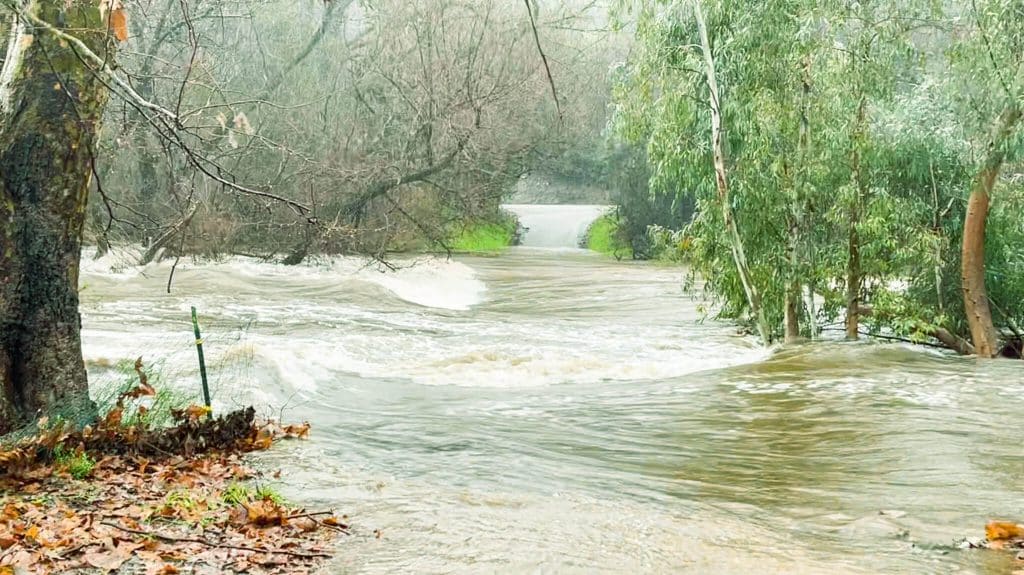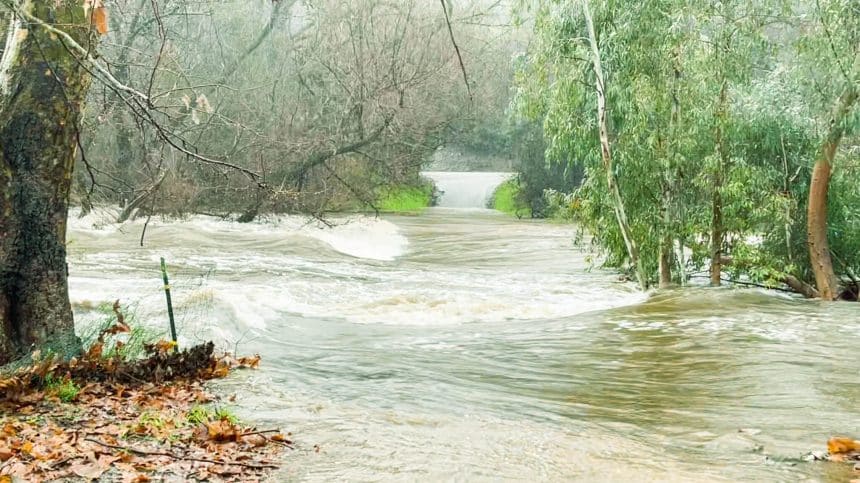RIVERSIDE Combined Sources — California’s 11th atmospheric river left the storm-soaked state with a bang Wednesday, bringing flooded roadways, landslides and toppled trees to the southern part of the state as well as drought-busting rainfall that meant the end of water restrictions for nearly 7 million people.
Even as residents struggled to clean up before the next round of winter arrives in the coming days — with some 27,000 people still under evacuation orders statewide Wednesday — the Metropolitan Water District of Southern California’s decision brought relief amid the state’s historic drought.
The district supplies water for 19 million people in six counties
Restrictions on water use were imposed in the face of dwindling reserves at the state level. At the beginning of December, the state Department of Water Resources announced that water agencies throughout the state would be receiving only 5% of the allocations they requested from the state.
But as winter storms began hitting the region and rain and snow replenished supplies, the state announced in January that it would deliver 30% of requested allocations. That figure increased to 35% in February.
“While we certainly appreciate the improved water supply conditions, I want to caution everyone that our challenges are not over,” MWD General Manager Adel Hagekhalil said in a statement. “We ask everyone to remain diligent in saving water regardless of the weather.
“We also continue to face major uncertainties on our water supplies from the Colorado River,” he said.
The federal government has directed California and six other states to develop plans to cut their reliance on Colorado River water beginning next year.
But weather woes remained Wednesday, as an additional 61,000 people remained under evacuation warnings and emergency shelters housed more than 650 people, according to the California Governor’s Office of Emergency Services.
Flooding also closed several miles of the Pacific Coast Highway through Huntington Beach, south of Los Angeles on the Orange County coast, and potholes disabled more than 30 cars on one Southern California freeway. More than 144,000 utility customers statewide remained without power Wednesday afternoon, according to poweroutage.us.
Gov. Gavin Newsom surveyed flood damage in an agricultural region on the central coast, noting that California could potentially see a 12th atmospheric river next week. Officials have not yet determined the extent of the winter storms’ damage, both structurally and financially.
“Look back — last few years in this state, it’s been fire to ice with no warm bath in between,” the Democrat said, describing “weather whiplash” in a state that has quickly gone from extreme drought and wildfires to overwhelming snow and rain.
“If anyone has any doubt about Mother Nature and her fury, if anyone has any doubt about what this is all about in terms of what’s happening to the climate and the changes that we are experiencing, come to California,” the governor said.
Remaining showers across Southern California were expected to decrease through Wednesday evening as the storm headed toward parts of the Great Basin. The weather service said California will see minor precipitation this weekend, followed by another substantial storm next week.
Three clifftop apartment buildings were evacuated Wednesday morning when earth slid away from their backyards in coastal San Clemente, the Orange County Fire Authority said. Residents were also cleared out of a nearby building as the severity of the slide was studied.
California was deep in drought before an unexpected series of atmospheric rivers barreled into the state from late December through mid-January, causing flooding while building a staggering snowpack in the Sierra Nevada.
Storms powered by arctic air followed in February, creating blizzard conditions that buried mountain communities under so much snow that structures began collapsing.
The water content of the Sierra snowpack is now more than 200% of the April 1 average, when it normally peaks, according to the state Department of Water Resources.
Michael McNutt, a spokesperson for the Las Virgenes Municipal Water District, said the end of the Southern California restrictions is good news but cautioned people to continue to conserve water even in non-drought years.
“We all know that the next drought is just around the corner,” he said Wednesday. “We’ve got to treat the water coming out of our taps as the liquid gold that it is.”
The district depends almost entirely on state water supplies and had adopted aggressive conservation measures, including putting devices that drastically restrict water flow onto the homes of hundreds of people — including celebrities — who were deemed to be wasting water.
That program is now on hold, as is the district’s restrictions on lawn watering.




Поиск в гугле